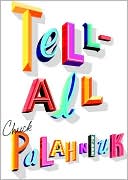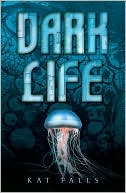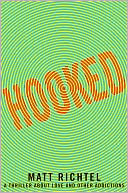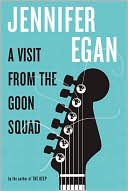 The Ark: A Novel
The Ark: A Novelby Boyd Morrison
Archeologist Dilara Kenner has rushed back to the States at the behest of Sam Watson, an old family friend. Sam meets her flight at LAX and explains, "Three days ago, I made a startling discovery at work. It has to do with Hasad." Hasad, Dilara's father, has been missing for three years. Just as Sam begins to tie Hasad's disappearance to a plot to "kill millions, maybe billions" that will culminate eight days hence, the old man collapses, the apparent victim of a very suspiciously-timed heart attack. His final words "Listen! Tyler Locke. Gordian Engineering. Get... his help. He knows... Coleman. Your father's research... started everything. You must... find the Ark."
(I know, I know, we've all seen exactly this sort of opening to any number of thrillers. There are always some adventurers off in search of some holy grail or other, and who also have to save the world along the way. Yes, we've seen these types of stories before, but the thing is, when they're well done, they're entertaining as hell. And folks, this one is really well done. No plot description or talk of well-developed characters will ever give you a sense of why this book stands out so well against the pack of clichéd thrillers. At some point the reader must take a leap of faith and give a new novelist a try. I'm telling you right now, this is the one to give a try.)
The eponymous Ark is Noah's, of course. Dilara's father has been hunting it for decades and she's been as dismissive of his work as the rest of the world--but apparently someone was paying attention. First, however, Dilara needs to stay alive long enough to find out who Tyler Locke is. From the moment she leaves LAX, the attempts on her life come fast and furious. She quickly discovers that Locke is an engineer, currently working on a remote oil rig, and figures that may well be the safest place for her. She's wrong. At least Dilara and Tyler have connected, but he's as mystified by Sam's final words as she is. Still, there's no denying that something very suspect is going on, and Tyler is quickly sucked into Dilara's drama.
It is Tyler Locke that debut novelist Boyd Morrison is setting up to be the recurring hero of a series. And if this first adventure is any indication, Locke is up to the task. While he owes a debt to action heroes like Dirk Pitt and Philip Mercer, there's something a bit softer about Tyler. He comes by his "kick-ass" side quite believably, having served as a combat engineer in Desert Storm, but he's as likely to pull a Leatherman tool on you as a gun. Now in his 30's, he's a young widower trying to come to terms with loss. And he has a bit of an egghead side, too--approaching each challenge as an engineering problem. It's more interesting than you might, at first glance, think. Here, for instance, are some thoughts on the conundrum of Noah's Ark:
"From an engineering standpoint, a purely wooden ship bigger than that is untenable. Without the iron frames and internal bracketing that 19th century ships had, a ship the size of Noah's Ark would flex like a rubber band. It would have sprung leaks in a thousand places. Not to mention that in a raging storm like the Flood, wave oscillations would have snapped the frame like a twig. The Ark would have sunk in minutes. Good-bye human race." From there, Tyler analyzes the lifespan of wooden artifacts, the storage capacity of the Ark, and the amount of water it would have taken to cover the earth. This is a man whom likes to throw logic at a problem.
Once Tyler and Dilara have teamed up, however, there is little time for academic discussions. Sam's cryptic words take on horrifying meaning as unfolding events capture the entire world's attention. The events described thus far happen within the novel's first few chapters. Throw in some monster trucks, mysteriously melting movie stars, and megalomaniacs and you've barely brushed the surface of what lies ahead. Boyd Morrison has plotted a wild ride that is guaranteed to keep readers turning pages deep into the night. The Ark is not only intricately plotted, it's smart. Morrison gives his readers credit that they'll be able to follow along, and it's a pleasure to read an author not catering to the lowest common denominator.
I can't claim that this release is my introduction to Morrison's work. The truly cognoscenti have been fans since long before Simon & Schuster came into the picture. But, it's exciting to finally let the rest of you in on this find. I can't wait for the sequel!
Comment Permalink
 Michael Tolliver Lives
Michael Tolliver Lives









